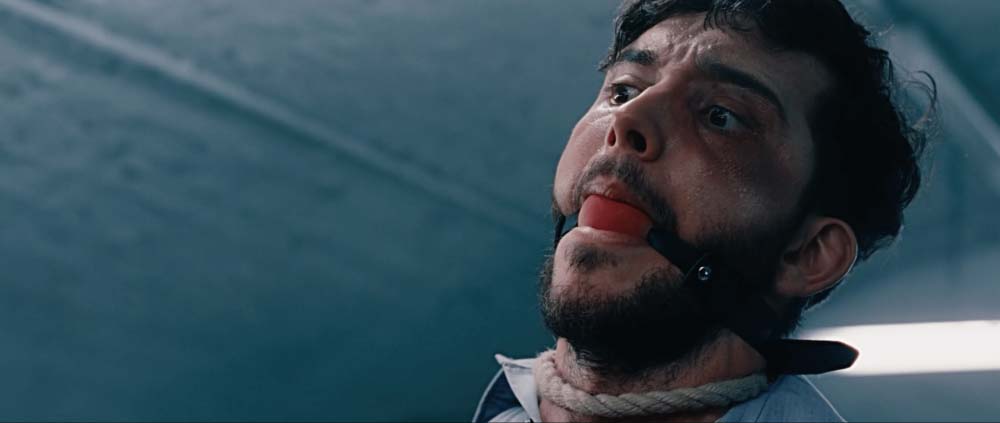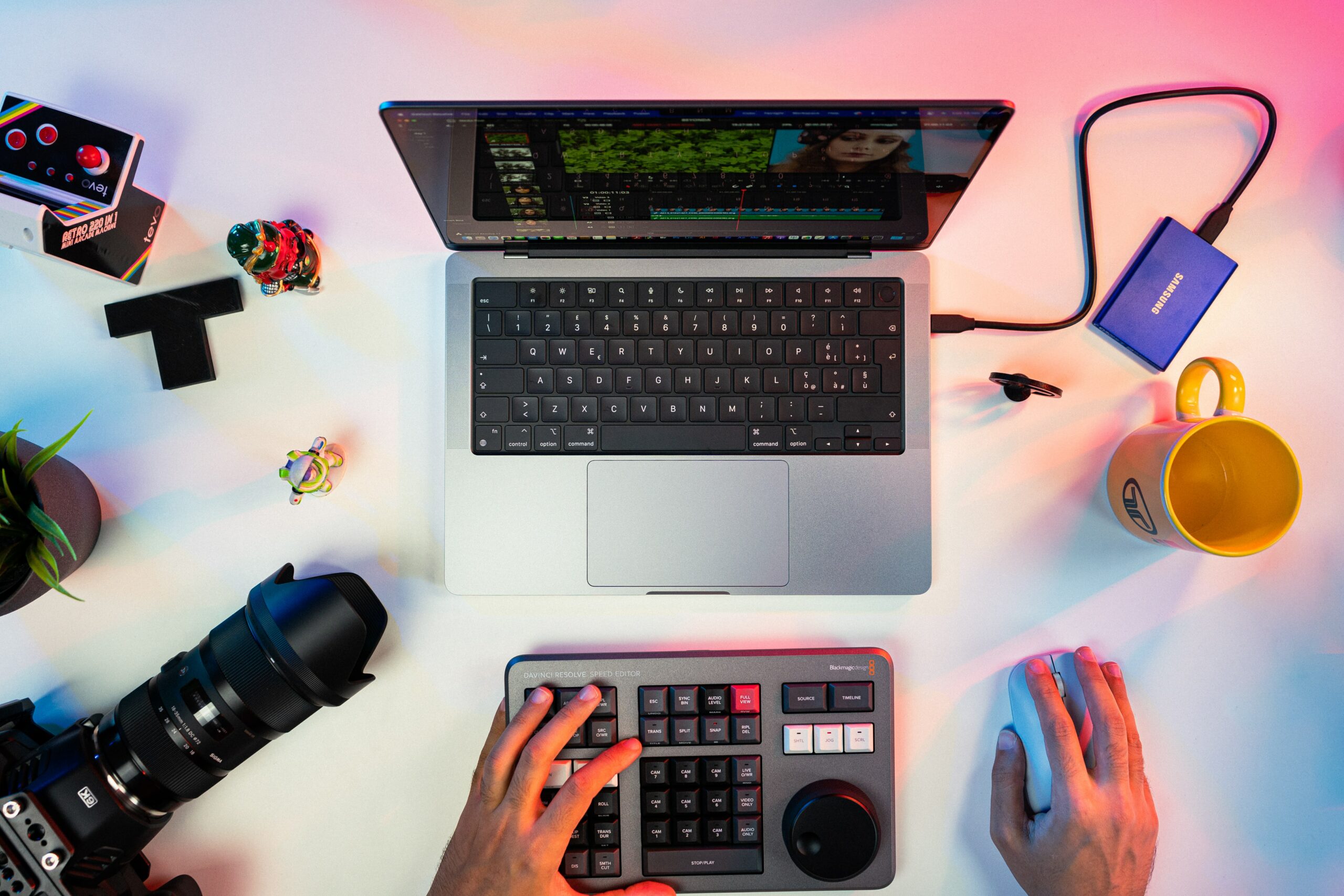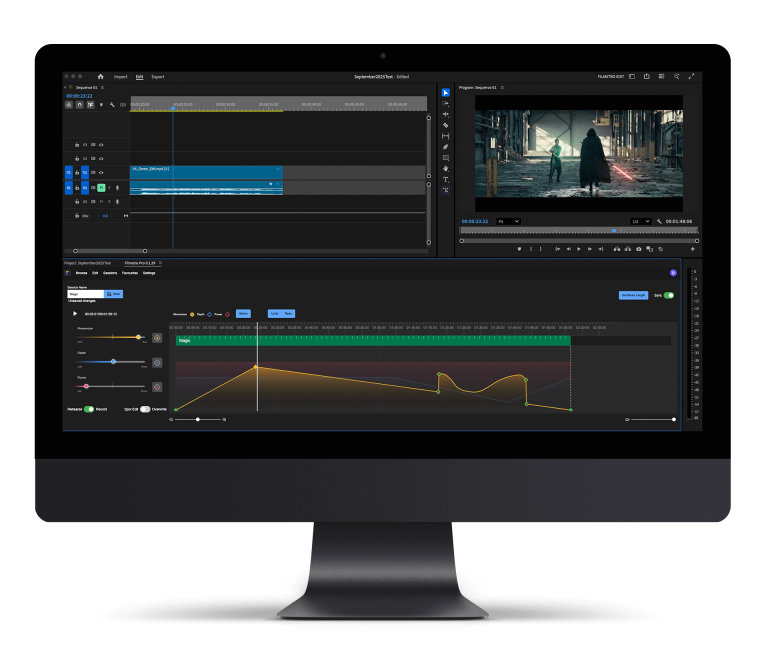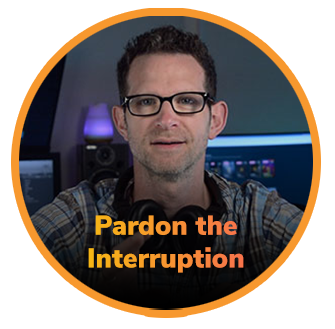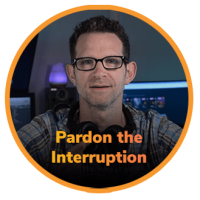Find out what it took to make a classic dystopian short film for the modern times.
Making short films and entering them into film festivals has always been a great way of getting your name out there as a Director, Writer or a DOP and that’s exactly what Varun Ramen, Tom Hancock and Thomas Shawcroft have done.
Their short film Transmission won over 12 awards at various film festivals and made the cut to be part of ‘official selections’ across many more film festivals. The 17 minute short film is set in the near future in which Britain becomes Brittannia — and ‘together we stand alone’. Leonard Hughes finds himself precariously tied to a noose. He’s unsure of where he is and how long he has been there. And his interrogator, Dr Sam, pops in for a visit.
Recently the online channel (who operate on Youtube, Facebook and Instagram) selected Transmission to show on their channel – which is great news as getting featured on Omletto will always get your film thousands of viewers.
If you’ve never heard of Omletto, it’s a great channel for filmmakers and short film lovers to watch some amazing hand picked short films from all sorts of genres. We’ve literally spent hours watching some of the most inspiring and well crafted films that we may have ever seen.
We interviewed Varun Ramen (director & writer) , Tom Hancock (director & writer) and Thomas Shawcroft (DOP) about their experience making Transmission:
What inspired the idea for this film?
TH: We wanted to make something with the limitation of a chamber piece, and a two hander. The ultimate cheap and controllable scenario for a short film. However we caved, and added the exterior locations and a third character, to freshen it up and give it more scope. We also needed a metaphysical ‘in’ on the story, so an interrogation type scenario is very fitting, given the psychological nature mind games and power dynamics.
VR: Very quickly, we had a few set pieces come to mind, the kind of things we would like to see on a cinema screen. And we wanted to try a style of cutting that was always as if the rug was being pulled from underneath the audience. There’s a Czech film from the 60s, called The Cremator, that was a big influence on us. And Nicolas Roeg of course. Our Editor, Darrin Brading turned out to be a real natural at this.
TH: But the primary main inspiration was to make the most cinematic short film possible in just shooting in a basement.
What sort of budget were you working with and what were there any restrictions caused by this (if any)?
VR: We realised that no funding bodies or schemes seemed to make the kind of short films that we wanted to make and see. So we decided to back ourselves with everything we’d saved for previous short projects that never got off the ground, plus a commission we got from producer Merlin Merton for a feature script a few years back.
TH: To give a loose sense of the budget, let’s just say, it’s something like that of a wedding. And along with that mention, we’re not ashamed to say, yes, our parents helped us too.
How did things go during the shoot?
TH: It seems that the more ambitious you are with something, the more it’s going to fire up other people to want to try and pull it off too. And people like challenges.
TH: Thomas Shawcroft, the DOP on this film, was the first cinematographer we ever spoke to that didn’t blink once when we said we wanted to shoot on film. There was never a moment of hesitancy. And with Thomas being the person he is, he helped put together an extremely dedicated, talented and likeable crew.
VR: He was very much a co-producer on the project. He really called in a lot of favours to help us pull this off. When we got to the interior shoot, looking through the viewfinder looked just like the storyboards – which was testament to a lot of people, like Thomas, production designer Alec Walker and storyboard artist Adam Davis.
What equipment and software did you use to make this film?
TS: Shot on primo lenses, but also used a 45-275 mm zoom lens for the pull-out shot from Dr. Sam’s mouth to the wide. We used a dolly for movement in the interiors and a steadicam for movement in the exteriors. The steadicam allowed us to transport equipment much more easily to a very inaccessible beach for the exteriors.
TH: We chose to shoot on film because the short was set in an imagined future. Whilst digital is great for sharpness and clarity and a ‘real-life’ aesthetic, it would have killed the atmosphere, colour palette and tone we wanted for TRANSMISSION.
VR: Adobe Premiere Pro. That was what our editor Darrin Brading’s go-to software was.
What kind of lighting setup (if any) did you use? If you only used available light, what were the struggles and benefits of this?
TS: On the interiors, we mostly used fluorescent tubes, with some also having be in the frame. We also used tungsten and some flickering and lighting effects with dimmers and flicker boxes.
How did you go about location scouting?
VR: We thought finding a big basement would be easy in Bristol, given the number of tunnels it has underneath due to its dark history of slavery. But one that had the width, length and height we needed was difficult. The only ever real option was Colston Hall in Bristol. And they were amazing.
TH: The exteriors were very particular too. We needed a big expanse of lake, a beach, and tall trees. And an interesting landscape that wouldn’t come off as flat and uninteresting.
So we set to internet searching every body of water in a three hour driving radius around Bristol. We had a lot of very long, very nice days out with Thomas Shawcroft.
Finally, late on one of the days, when we felt like giving up, we pushed on and found Burrator Reservoir. And we immediately knew it was the one. It checked all our boxes.
What was your process in regards to setting up and finding the perfect shot?
VR: Adam Davis storyboarded every shot for us. So we edited them together to make an animatic for the film. This was done very early on, so everyone knew what we were looking for. But of course, that’s only a blue print still. Thomas Shawcroft really made the depth, the light-play, and the movement his own.
TH: We also put together a lot of Pinterest boards, Powerpoints and Excels, breaking down every item, and trying to give a reference of what we were going for. To really get everybody’s brains calibrated to the same direction. There are thousands and thousands of decisions that have to be made, so it’s best to start breaking down each and every one, because an answer will inevitably be needed at some point. And the earlier you have it, the cheaper it will be.
How do you determine the kind of shot you want when you find a good place to film? (also, how do you determine what is a good place to shoot?)
VR: A lot of it is intuitive and what you feel is best as a director. And of course, what is logistically possible in the location. Jonathan Demme’s style was of huge importance here. He is one of the very best at conversational powerplay, as best evidenced by The Silence of the Lambs. And along with this, we mixed it up with a bit of David Lynch’s knack at portraying the abstract and the inexplicable.
TH: We wanted every new moment Leonard found himself thrust into, to feel present. Even if it might be a memory, or a dream. Despite having been somewhere else just a second before, he needed to try and find a new sense of direction each time – to hold off the madness Dr Sam is trying to induce.
That was some fantastic insight from Varun, Tom and Thomas – especially if you’re looking to direct your next short film. Don’t forget that you can find out more about what they do by following them on Instagram, Facebook and Twitter.
You can also check out Omletto too – and don’t forget to like and share this article and subscribe to our newsletter for more filmmaking goodness!


